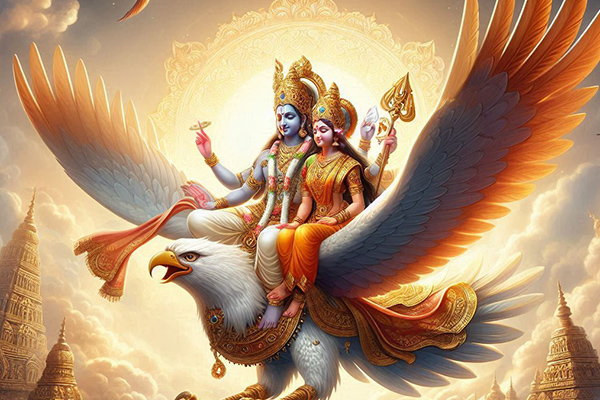
Rama Ekadashi is a revered festival which falls on the 11th day of Krishna Paksha, the dark phase of Moon, in the month of Kartik, as per Hindu Calendar, which is October-November by Gregorian Calendar. This Ekadashi is very important as it comes approximately 4 days before the festival of Diwali.
About Rama Ekadashi (Meaning)
.jpg)
Rama Ekadashi is also known as Kartik Krishna Ekadashi. Maa Laxmi, the Goddess of wealth and good fortune, consort of Bhagwan Vishnu is also known as Rama, and this Ekadashi is named after the Divine Goddess. On Rama Ekadashi, along with Vishnu, Laxmi is also worshipped. Lord Vishnu has a thousand names, among which Damodara is one of the names, which refers to Krishna, the 8th Avatar of Vishnu. Bhagwan Vishnu/Krishna in the Damodara form is also the presiding Deity of Rama Ekadashi. The name Damodara is a compound of two Sanskrit words, the term Dam means cord/rope and Udara means belly. Infant Krishna was often tied by His mother, Yashoda, with a rope to a pillar at home to restrain Him as little Krishna was very naughty. So, Damodara is Shri Krishna, who is Bhagwan Vishnu.
Observing the Rama Ekadashi Vrat is highly beneficial both materially and spiritually for the devotees bringing the blessings of both Bhagwan Vishnu and Maa Laxmi.
Rama Ekadashi Date, Tithi, & Parana Time (Muhurat) 2026
Rama Ekadashi on Thursday, November 5, 2026
On 6 th Nov, Parana Time - 06:41 AM to 08:57 AM
On Parana Day Dwadashi End Moment - 10:30 AM
Ekadashi Tithi Begins - 11:03 AM on Nov 04, 2026
Ekadashi Tithi Ends - 10:35 AM on Nov 05, 2026
The fast must be broken after sunrise the next day of Ekadashi. Note that one should break the fast (Parana) within Dwadashi Tithi. Another important consideration is that one must not break the fast-during Hari Vasara which is the fourth duration of Dwadashi. The best time to break the fast is Pratah Kala (morning).
What to do on Rama Ekadashi?
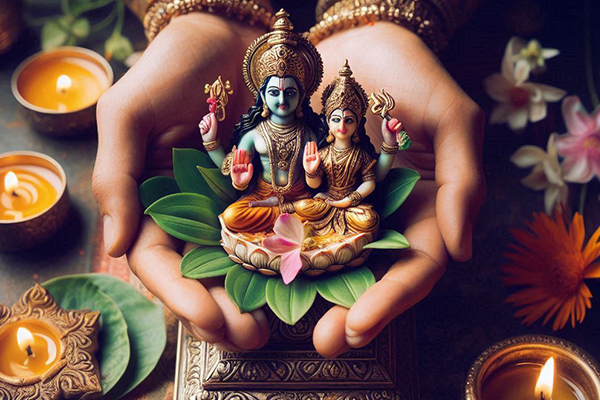
The auspicious day of Rama Ekadashi should be spent in a spiritual mode. After having a bath early in the morning, the devotee should intend and take Sankalpa of observing the Rama Ekadashi Vrat/Fast. Worship Lord Damodara/Vishnu by lighting a Ghee Diya(lamp) in the Puja Alter/room, offering fresh flowers, Tulsi, sweets and Bhog. Devotees perform Abhishek of Shaligram Shila, if they have one at home on this day. Visit temples of Lord Vishnu or Krishna. Goddess Laxmi and Tulsi ji are also worshipped on Ekadashi. The day should be spent in a spiritual mode, chanting Lord Vishnu Mantras, singing praises, reading holy books like the Bhagawat Geeta etc., and reading or hearing the Rama Ekadashi Vrat Katha, which is a part of the Vrat Vidhi. The devotee should not sleep during the day and stay awake in full consciousness at night, immersed in Lord Damodara's service. Charity and donations done on Ekadashi bring benevolent outcome.
Rama Ekadashi Puja Vidhi (Pooja Procedure)
.jpg)
Rama Ekadashi comes just before Diwali and it is said that Rama Ekadashi is the most propitious day to worship Devi Laxmi, the consort of Bhagwan Vishnu and Goddess of wealth, prosperity, good fortune and abundance, along with Shri Damodara/Vishnu. From this day onwards the worship of Goddess Laxmi starts and continues through the Diwali festival.
On Rama Ekadashi after taking a bath early in the morning and wearing fresh clothes, take Sankalp of Vrat/fast to put forward your intention to Bhagwan Vishnu and request his blessings for successful completion of the Vrat.
Light a Ghee Lamp in your Puja Mandir/Altar.
A separate Chowki can also be set up for the Rama Ekadashi Puja, with Shri Krishna/Vishnu and Goddess Laxmi idols or images. Offering Yellow clothes for Shri Krishna/Damodara and Pink clothes for Goddess Laxmi, can be done.
Perform Abhishek of Lord Damodara/Krishna /Vishnu with Gangajal (holy water of Ganges River) and Tulsi leaves. Devotees who have the sacred Shaligram Shila at home will perform Abhishek of Shaligram. Tulsi leaves are very important for worshipping Bhagwan Vishnu as they are His favorite. Apply Chandan Tilak on Shri Krishna/Vishnu.
Offer fresh flowers, incense and offer Bhog.
On Rama Ekadashi additional offering of White Butter, Mishri pleases Shri Krishna as these are His favorite.
Perform Aarti of Shri Damodara.
Chant Bhagwan Vishnu Mantras. Reciting the Vishnu Sahasranama on Ekadashi is meritorious.
On this day Tulsi Jee is worshipped too.
Keep chanting and singing praises of the Lord and Maa Laxmi on Rama Ekadashi for the best outcome.
Rama Ekadashi Puja & Vrat Mantras
On Rama Ekadashi Bhagwan Vishnu/Krishna Mantras should be chanted.
Om Namah Narayanaya
Om Namah Bhagavate Vasudevaya
Hare Krisha, Hare Krishna, Krishna Krishna Hare Hare
One can also chant Laxmi Mantras:
Lakshmi Beej Mantra
ॐ ह्रीं श्रीं लक्ष्मीभयो नमः॥
Om Hreem Shreem Lakshmibhayo Namah॥
Mahalakshmi Mantra
ॐ श्रीं ह्रीं श्रीं कमले कमलालये प्रसीद प्रसीद
ॐ श्रीं ह्रीं श्रीं महालक्ष्मयै नम:॥
Om Shreem Hreem Shreem Kamale Kamalalaye Praseed Praseed
Om Shreem Hreem Shreem Mahalakshmaye Namah॥
Lakshmi Gayatri Mantra
ॐ श्री महालक्ष्म्यै च विद्महे विष्णु पत्न्यै च धीमहि,
तन्नो लक्ष्मी प्रचोदयात् ॐ॥
Om Shree Mahalakshmyai Cha Vidmahe Vishnu Patnyai Cha Dheemahi,
Tanno Lakshmi Prachodayat Om॥
Rama Ekadashi Vrat Vidhi (Fasting Procedure)
.jpg)
The Vrat Vidhi of Rama Ekadashi should be followed perfectly for successful completion of the Vrat. Keeping a complete fast, Nirjala Vrat, without drinking water or food is the best form of fasting on Rama Ekadashi.
Mostly devotees keep a partial fast by drinking water but abstaining from eating anything till the next day morning. However, devotees should be aware of what their body and health and fast accordingly.
Rama Ekadashi Vrat starts on the morning of Ekadashi and the Sankalp(intension) of observing the Vrat(fast) should be taken after having bath early in the morning, preferably before sunrise.
Invoke and worship Shri Damodara/Vishnu and perform Abhishek of Shri Shaligram Shila, if the sacred stone is there at home.
Reading or hearing the Rama Ekadashi Vrat Katha is a must.
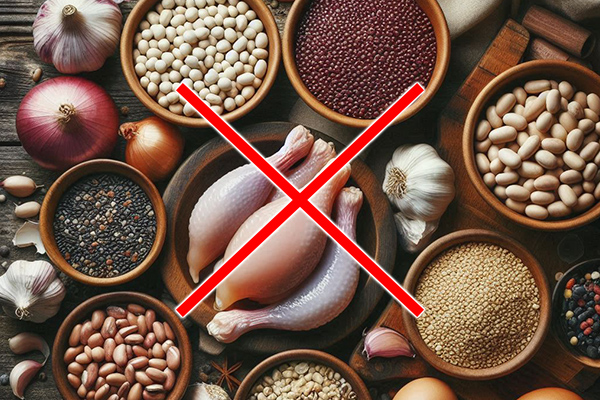
Beans and grains are not to be consumed on Ekadashi for devotees who are fasting by eating one meal on Ekadashi.
Non vegetarian food, onion, garlic is strictly not allowed on Ekadashi and Dwadashi.
Sleeping during the day or night during Ekadashi Vrat is prohibited.
One should be consciously awake and in service of Divine Shri Damodara (Vishnu). The devotees should chant/ sing praises of Vishnu or Krishna, recite the Vishnu Sahasranama, read the Bhagawat Geeta and other holy books through the day and night. Singing Bhajan/Kirtan on this day pleases Damodara.
Gossiping and talking ill of others does not give the desired outcome of the Ekadashi Vrat. Be positive in thoughts and words.
Abstinence from alcohol, drugs, tobacco, sex, other addictions, on Ekadashi and Dwadashi must be observed.
Maintain calmness, avoid anger/aggression for the best outcome of observing the Rama Ekadashi Vrat.
Distribute the Prasad to family members and as many people as possible on Dwadashi.
Devotees who observe fast should not eat food in other people's house on the day after Ekadashi.
The next morning, on Dwadashi, give charity to Brahmanas respectfully ask them for forgiveness for any offence. Donating to the needy is also advised which garners Bhagwan Vishnu's blessings.
For people who observe the Vrat, when breaking the fast, should say the prayer - 'O Pundarikaksha, O lotus-eyed Lord, now I will eat. Please shelter me'.
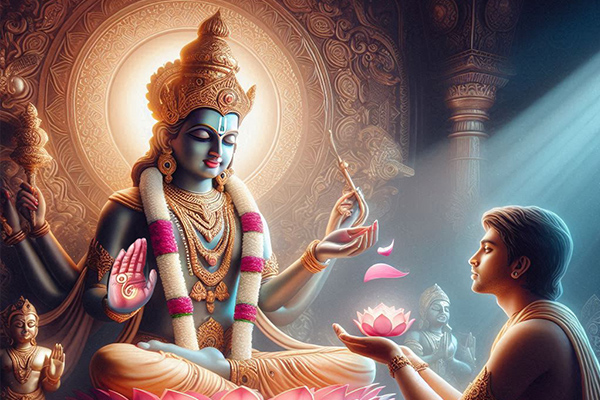
After the prayer the devotee should offer flowers and water at the lotus feet of Bhagwan Vishnu and request the Lord to eat by chanting the mantra of eight-syllable, thrice: Om Namah Narayanaya.
To garner the full merits of the fast, the devotee should drink the water offered to Bhagwan.
On Dwadashi only one meal should be eaten, and Honey and Urad-dal (black lentil) is not to be consumed.
For devotees observing fast, if due to some unavoidable reason they are not able to break the fast on Dwadashi during Parana time, then drinking water to signify breaking of fast is advised. Later food can be eaten as per convenience.
In the evening pray and perform Aarti of the Divine deities. Distribute the Prasad among family and friends.
On Dwadashi ritualistically worship Shri Krishna/Damodara and Maa Laxmi. Give charity to Brahmins and offer food and break your fast with gratitude to Divine.
Rama Ekadashi Vrat Katha (Traditional Fasting Story)
.jpg)
Once there was a King named Muchukunda, who was a great devotee of Bhagwan Vishnu and used to strictly observe fast on every Ekadashi. King Muchkunda was a benevolent King, and he had set the rule for all his subjects to observe the Ekadashi Vrat. He had a beautiful daughter named Chandrabhaga, who like her father was a devotee of Bhagwan Vishnu. King Muchukunda gave his daughter Chandrabhaga's hand in marriage to Prince Shobana, the son of King Chandrasena. However, Shobana was physically weak and could not bear hunger. When Shobana visited his father-in-law's kingdom after marriage, it was just before Rama Ekadhashi. Knowing that her husband had a weak constitution and would not be able to fast for the whole day and night, Chandrabhaga gave him the option to go to another city for Rama Ekadashi day and come back later or observe the Rama Ekadashi Vrat. She explained to Shobana that her father would not exempt him from fasting as even the animals were not allowed to eat on Ekadashi. Chandrabhaga asked her husband to make a choice.
Shobana chose to observe the Rama Ekadashi Vrat rather than leave his wife and go to another kingdom, saying he is willing to go along with his fate. As Rama Ekadashi day progressed, it became harder for Shobana to tolerate his hunger, but Chandrabhaga was helpless. By midnight Shobana succumbed to death as his weak body could not tolerate the austerity.
After his death, in the heavenly realms, Prince Shobana was given a kingdom on Mandarachala Mountain because he had expired while observing the Rama Ekadashi Vrat and had accumulated the merits of the Vrat. His Palace was like that of a Demi Gods or Devas, extremely beautiful, encrusted with precious gems and grand. He was entertained by the Gandharvas and Apsaras, while he sat on his throne.
A Brahmin from King Muchukunda's kingdom during a spiritual journey, chanced upon Shobana, sitting in his grand Palace. King Shobana received the Brahmin with respect and extended his hospitality. Later, King Shobana enquired about the wellbeing of his wife, King Muchukunda and the kingdom. The Brahmin told him that everyone was well and hearty and then expressed his desire to know how Shobana became the ruler of such a huge and beautiful kingdom. King Shobana explained to the good Brahmin that the kingdom was given to him for the merits he had earned by observing the Rama Ekadashi. He further said that his kingdom was temporary and would vanish as he had not observed Rama Ekadashi Vrat willingly and was forced to, due to the rules of his father-in-law for Ekadashi Vrat. He requested the Brahmin to convey the message to his wife and ask her what can be done to make his kingdom permanent.
On returning to King Muchukunda's kingdom, the Brahmin met Chandrabhaga and narrated the story of her husband King Shobana and the request for help from him. Chandrabhaga immediately told the Brahmin to take her to her deceased husband and reunite them. She said that she has been observing every Ekadashi Vrat sincerely from childhood, and she has accumulated merits which she was willing to give to her husband so that his kingdom becomes permanent and does not vanish.
The pious Brahmin along with Chandrabhaga set out on the journey. They stopped at the base of Mount Mandarachala, to meet Vamadeva, a great Rishi, who chanted Vedic Mantras and sprinkled the holy water on Chandrabhaga. This made the body of Chandrabhaga transcendental, and she could easily and happily reach her husband's Palace. King Shobana was extremely happy to see her and so was she to see and reunite with him. As intended, Chandrabhaga transferred all the fruits and merits she has earned by observing Ekadashi Vrat to him, which made his Palace and kingdom permanent, and it thrived till the end of time. King Shobana and Chandrabhaga liked a peaceful, happy life.
Rama Ekadashi Importance | Significance of Rama Ekadashi Fasting
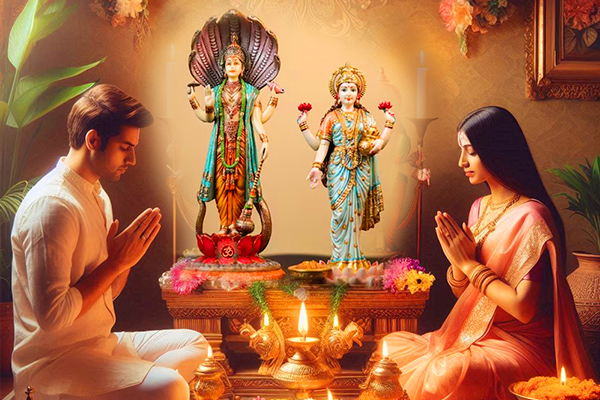
Observing Rama Vrat pleases Lord Damodara/Krishna (Vishnu), who is the presiding Deity of Rama Ekadashi. It also brings the blessings of Goddess Laxmi.
Rama Ekadashi Vrat, when observed with sincerity and devotion, dissolves sins of the devotee.
The Rama Ekadashi Vrat offers an opportunity for the devotee to focus only on Lord Damodara, chant and sing His praises which helps to garner the blessings of the Lord and adds to the fruits earned by the devotee in his/her spiritual journey.
Observing Rama Vrat helps to remove Pitru Dosha. The ancestors of the devotee bless him/her, and they progress to a higher realm.
Observing Rama Vrat and other Ekadashi Vrat ensures Moksha and a place at the Lotus feet of Bhagwan Vishnu.
Rama Vrat helps to fulfill material and spiritual desires of the devotee.
Rama Ekadashi Benefits
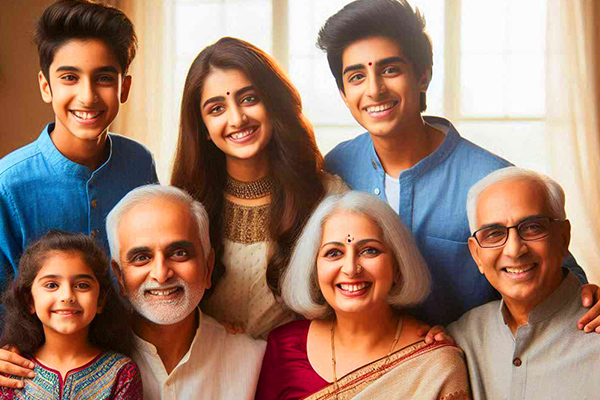
Puja of Shri Damodara/Krishna (Vishnu) and Goddess Laxmi on Rama Ekadashi blesses the devotee and family with good health, prosperity, wealth, good fortune, righteous living, spiritual progress, happy family, loving relationship between married couples, contentment, worldly comforts, joy, all round protection and abundance. It alleviates miseries, debts and strife and brings benevolent grace of Shri Krishna (Vishnu) and Goddess Laxmi.
Rama Ekadashi Daan (Donation):
.jpg)
Donation on Rama Ekadashi is considered highly auspicious and commendable. Here are some suggested items to donate on this sacred day:
Food items:
- Rice, wheat, and other grains.
- Fruits and vegetables.
- Cooked meals to the needy and hungry.
Click Here to Book Food Donation (Ann Daan)
Clothing:
- New clothes for the poor and underprivileged.
- Warm clothes, blankets, and shawls, especially in cold areas or winter seasons.
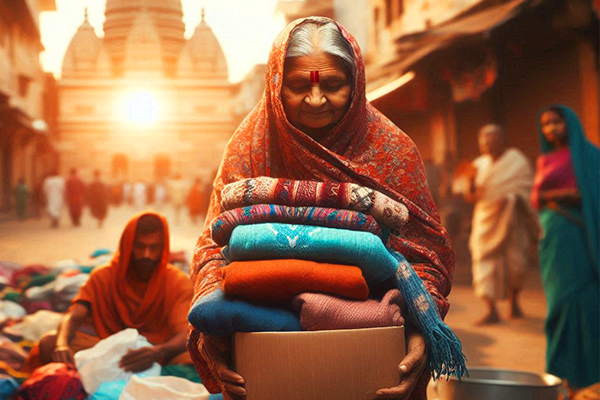
Click Here to Book Clothes Donation (Vastra Daan)
Money and benefaction:
- Financial donations to temples, charitable organisations, or directly to those in need.
- Supporting the education of underprivileged children by donating to schools or educational charities.
Religious Items:
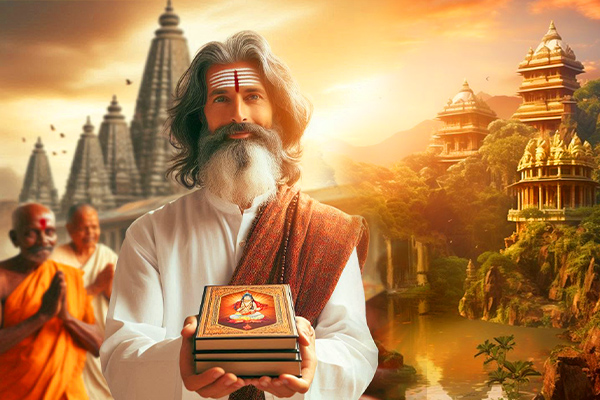
- Books on spirituality and religious scriptures.
- Items used in worship like incense sticks, diyas (lamps).
Shelter and Support:
- Donating to shelters for the homeless or animal shelters.
- Contributing to the construction of schools, hospitals, and community centres.
Cows and Animal Care:
- Donating to goshala (cow shelters) or animal welfare organisations.
- Providing food & fodder and other essentials for animals.
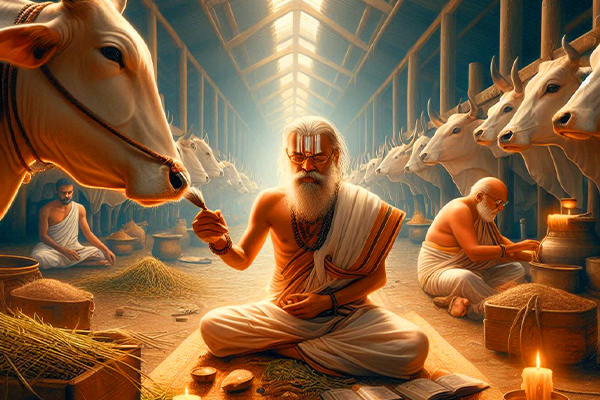
Click Here to Book Cow Donation (Gau Daan)

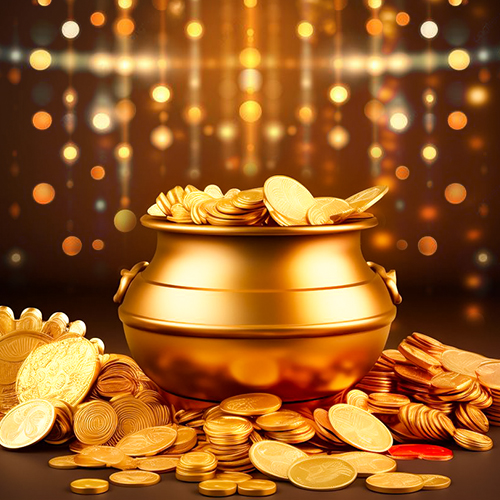
-in-Astrology.jpg)
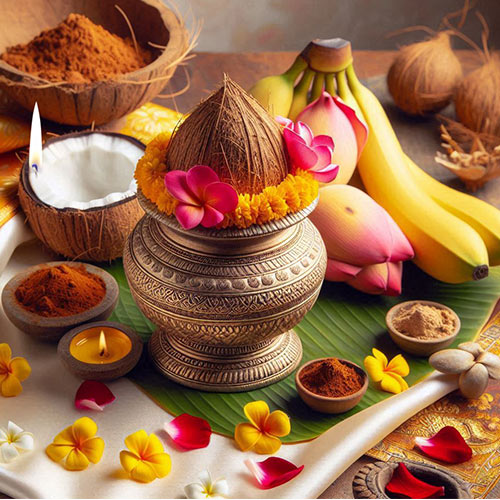
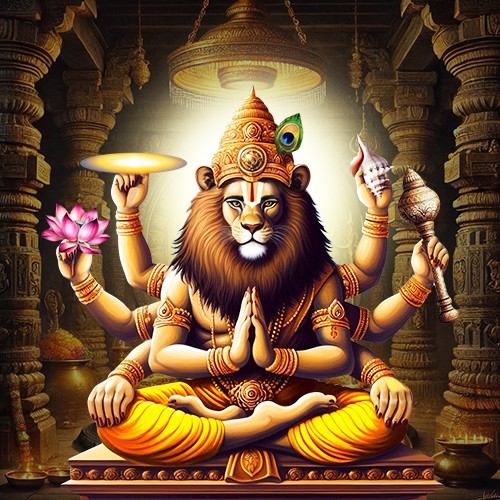
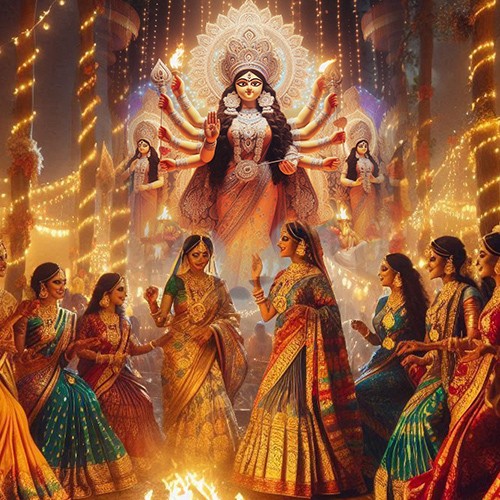
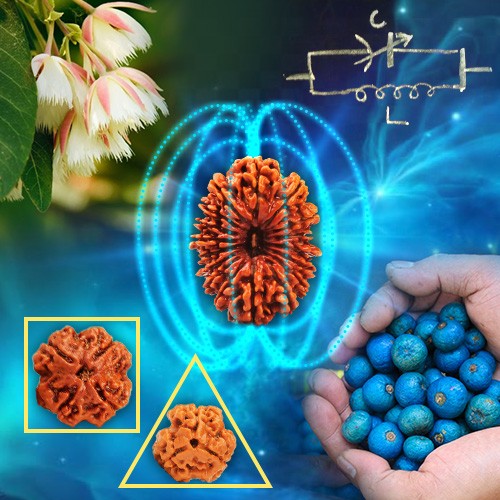

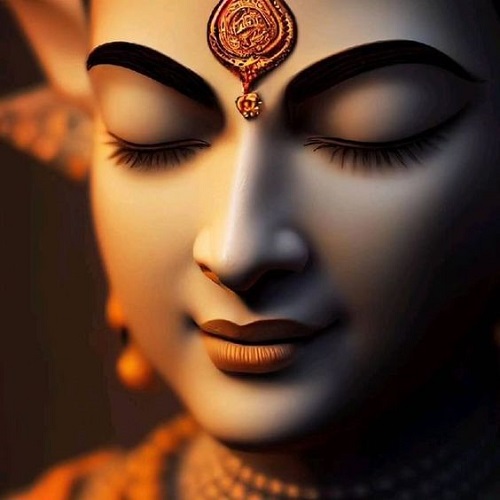
.jpg)
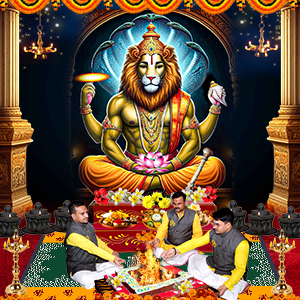
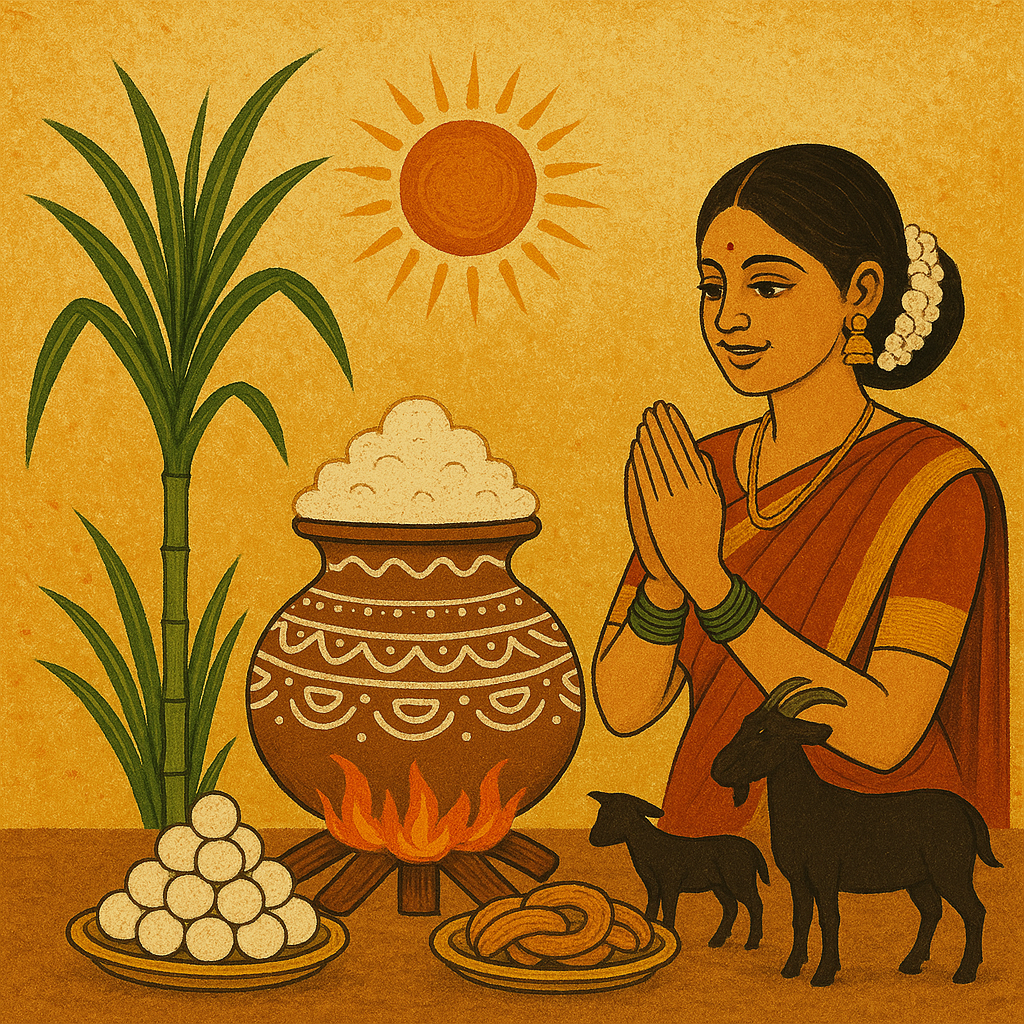

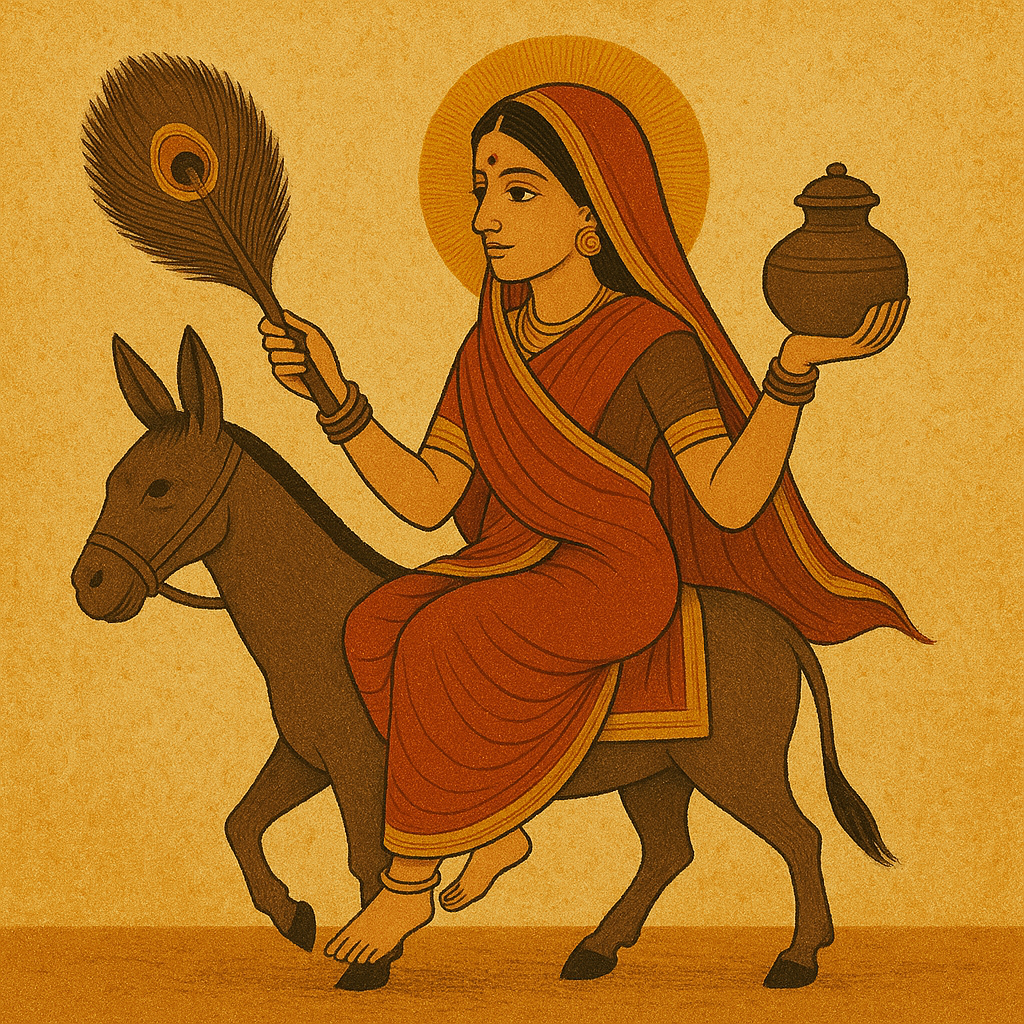
Comments 0
Leave your thought here